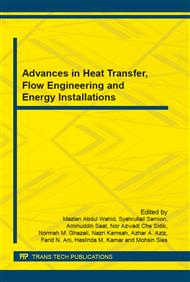p.3
p.11
p.16
p.23
p.29
p.34
p.42
p.46
Progress and Challenges in the Development of Detonation Engines for Propulsion and Power Production
Abstract:
The scientific study of detonation stretches over a century and the potential to harness detonations for propulsion and power was recognized for almost as long. It is only in the past two decades that detonation applications have received intense attention. Attractions for utilizing detonations include the higher theoretical thermodynamic efficiency compared to deflagration-based systems, high power-to-weight or volume ratio and lack of moving parts. Despite these attractive features, a number of fundamental physics and engineering challenges must be overcome before such systems can be practical. Some of these include the ability to achieve consistent and reliable detonations in a practical arrangement, understanding of the unsteadiness, and integration with ancillary systems. Illustrations will be provided on how some of these issues were understood and overcome. Potential challenges are also highlighted.
Info:
Periodical:
Pages:
3-10
Citation:
Online since:
January 2016
Authors:
Keywords:
Price:
Сopyright:
© 2016 Trans Tech Publications Ltd. All Rights Reserved
Share:
Citation:


